How to turn on Panasonic Cordless Telephone handset?
- RrvazquezSep 8, 2025
If the handset of your Panasonic Cordless Telephone does not turn on even after installing charged batteries, place the handset on the base unit or charger to turn it on.
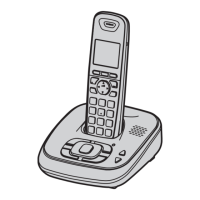
How to turn on Panasonic Cordless Telephone handset?
If the handset of your Panasonic Cordless Telephone does not turn on even after installing charged batteries, place the handset on the base unit or charger to turn it on.
How to fix a Panasonic KX-TG4031 when the handset does not ring?
If the handset of your Panasonic Cordless Telephone isn't ringing, check that the ringer volume isn't turned off and adjust it if necessary. Also, ensure that silent mode is not turned on; if it is, turn it off.
Why is my Panasonic KX-TG4031 Cordless Telephone beeping and flashing?
If your Panasonic Cordless Telephone handset beeps and/or the ) symbol flashes, the battery charge is likely low. Fully charge the batteries.
What to do if I cannot hear a dial tone on my Panasonic Cordless Telephone?
If you cannot hear a dial tone on your Panasonic Cordless Telephone, check the connections of the base unit’s AC adapter and telephone line cord. If the connections are correct, disconnect the base unit from the telephone line and connect the line to a known working telephone. If the working telephone operates properly, contact our service personnel to have the unit repaired. If the working telephone does not operate properly, contact your service provider/ telephone company.
What to do if my Panasonic Cordless Telephone batteries still flash after charging?
If you have fully charged the batteries of your Panasonic Cordless Telephone, but the – ) symbol still flashes, – 0 is displayed, or the operating time seems shorter, clean the battery ends (S, T) and the charge contacts with a dry cloth and charge again. If the problem persists, it may be time to replace the batteries.
Why is there noise when using my Panasonic Cordless Telephone?
If you are experiencing noise or sound cutting in and out on your Panasonic Cordless Telephone, it could be due to electrical interference. Try re-positioning the base unit and using the handset away from sources of interference. Also, try moving closer to the base unit. If you use a DSL/ADSL service, consider connecting a DSL/ADSL filter between the base unit and the telephone line jack.
What to do if I cannot register a handset to a Panasonic Cordless Telephone base unit?
If you cannot register a handset to a base unit for your Panasonic Cordless Telephone, it may be because the maximum number of handsets (6) is already registered to the base unit. Cancel unused handset registrations from the base unit.
Why can't I make long distance calls on my Panasonic KX-TG4031 Cordless Telephone?
If you cannot make long distance calls on your Panasonic Cordless Telephone, ensure that you have long distance service.
What does it mean when the indicator on my Panasonic Cordless Telephone flashes slowly?
If the indicator on your Panasonic Cordless Telephone handset flashes slowly, it could indicate that new messages or new voice mail messages have been recorded. Listen to the new messages or new voice mail messages.
Why is caller information displayed late on my Panasonic KX-TG4031 Cordless Telephone?
If caller information is displayed or announced late on your Panasonic Cordless Telephone, it may be due to your service provider/telephone company displaying the information at the 2nd ring or later. Try moving closer to the base unit.
| Brand | Panasonic |
|---|---|
| Model | KX-TG4031 |
| Category | Cordless Telephone |
| Language | English |
Details the different models and their components.
Lists supplied accessories for various models, including part numbers.
Provides details on optional accessories for purchase and replacement.
Compares features of optional handsets like display and button size.
Explains the function and use of the range extender unit.
Provides essential safety precautions for product usage.
Outlines rules for safe product operation and maintenance.
Guides on safe installation and optimal placement.
Details battery usage, care, and safety warnings.
Basic safety precautions to prevent fire, shock, and injury.
Guides on placing the base unit for optimal signal and minimal interference.
Instructions for cleaning and maintaining the product's exterior.
Covers product disposal, privacy, and other notices.
Guides on connecting the base unit and charger.
Details correct battery type and insertion for the handset.
Explains the charging process and indicators for the handset.
Provides crucial notes for connections, power failures, and battery handling.
Explains the eco mode for reducing handset power consumption.
Details handset and base unit controls, including soft keys and navigator keys.
Instructions on how to attach and remove the belt clip.
Explains the meaning of icons and items shown on the handset display.
Guides on setting display language and voice guidance language.
Covers setting dialing mode, date, and time.
Explains how to initiate calls using the handset or speakerphone.
Explains how to receive and end calls.
Covers redial list editing, pause function, and other call features.
Covers features like auto talk, ringer volume, and temporary ringer off.
Includes hold, mute, and flash functions for call manipulation.
Covers temporary tone dialing, clarity booster, call share, and privacy mode.
Explains the shared phonebook, capacity, and group assignment.
Step-by-step guide to adding new contacts to the phonebook.
How groups help organize and find phonebook entries.
Covers changing group names, finding, editing, and erasing entries.
How to dial numbers from the phonebook while on an active call.
Overview of programming features using menus.
Details programmable settings accessible via menus and direct commands.
Explains how to program settings using specific command codes.
Provides a table of features, codes, and settings for programming.
Lists additional programmable features, codes, and settings.
Guides on setting alarms and silent mode.
How to set and manage alarm functions for each handset.
How to set periods where handsets will not ring for outside calls.
Instructions for changing handset names and blocking calls.
Feature to reject calls from stored numbers or unknown callers.
How to block calls without phone numbers and manage call block list.
Steps to pair a new handset with the base unit.
How to remove a handset's registration from the system.
Explains how to use Caller ID features and requirements.
Describes displayed caller information, call logging, and special call types.
Explains the feature that announces caller information audibly.
How to assign different ringers to caller groups.
Covers viewing, editing, and managing the list of received calls.
Explains how the unit remembers and applies edited number formats.
Covers erasing caller information and storing it to the phonebook.
Explains the answering system's ability to answer and record calls.
How to activate or deactivate the answering system on base unit/handset.
How to listen to callers leaving messages in real-time.
Explains how callers hear a greeting message upon reaching the unit.
Covers recording, using pre-recorded, resetting, and playing greeting messages.
How to play back new or all messages via the base unit.
Instructions for deleting all recorded messages at once.
How to play back new or all messages via the handset.
Keys used to control playback of messages (volume, repeat, skip, stop, erase).
Covers calling back and editing numbers when Caller ID is used.
Covers remote access codes, deactivation, and using the system remotely.
Explains the voice prompts used during remote operation.
Lists remote commands for operating the answering system.
How to adjust the number of rings before the unit answers.
Discusses interaction with voice mail services and setting ring counts.
How to change the maximum recording time per caller.
How to enable or disable the flashing message indicator.
Explains the voice mail service provided by the telephone company.
Covers storing and erasing the voice mail access number.
How the unit detects voice mail tones and when to turn the feature off.
How to turn VM tone detection on or off.
How the unit indicates and how to listen to voice mail messages.
How to make and answer intercom calls between handsets.
How to page a handset to locate it.
Covers answering transferred calls and establishing conference calls.
Step-by-step instructions for mounting the base unit on a wall.
Completes wall mounting instructions and covers charger mounting.
Instructions for mounting the charger on a wall.
Lists common error messages and their causes/solutions.
Guides for resolving general use and programmable setting issues.
Solutions for problems like handset not turning on or unit not working.
Solutions for battery recharge issues and call-related problems.
What to do if the handset indicates low battery or charging issues.
Solutions for problems like poor sound quality or no dial tone.
Solutions for issues with Caller ID display, announcement, and auto-editing.
Addresses issues with second caller information display.
Solutions for the answering system failing to record messages.
Causes and solutions for being unable to use the answering system.
Solutions for problems encountered when accessing the system remotely.
Instructions for handling liquid damage to the handset or base unit.
Details FCC compliance, REN, and hearing aid compatibility.
Covers FCC rules, RF exposure warnings, and TIA-1083 standard.
Important safety information regarding RF exposure limits.
Spanish guide for installing the base unit, handset, and charger.
Step-by-step installation for the base unit in Spanish.
Spanish instructions for battery installation and charging the handset.
Explains handset function keys and navigation keys in Spanish.
How to change display and voice guidance languages to Spanish.
How to make and answer calls using the handset in Spanish.
Shared phonebook and answering system operations in Spanish.
Solutions for noise or conversation cutting out in Spanish.
Information on adding more handsets in Spanish.
How to answer waiting calls in Spanish.
Details the limited warranty coverage, parts, and labor.
Instructions for sending the product for warranty service.
Outlines what is NOT covered by the limited warranty.
Contact details, web resources, and TTY numbers for customer support.
Information on how to purchase parts and accessories online or via phone.
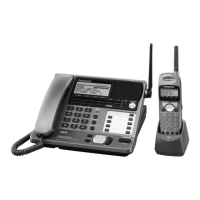
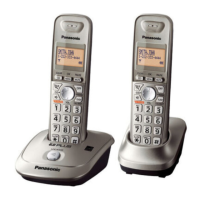
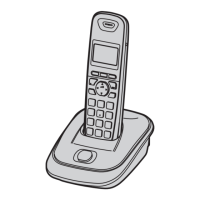
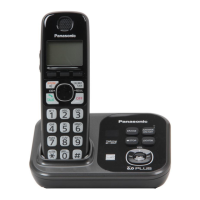
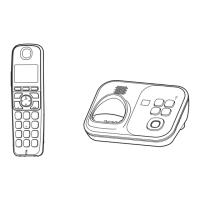
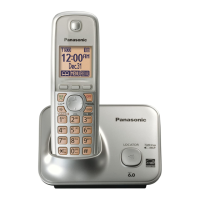
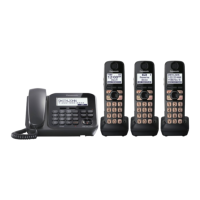



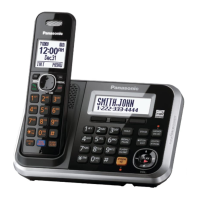
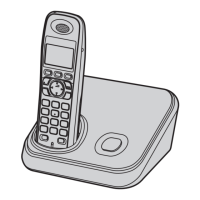
